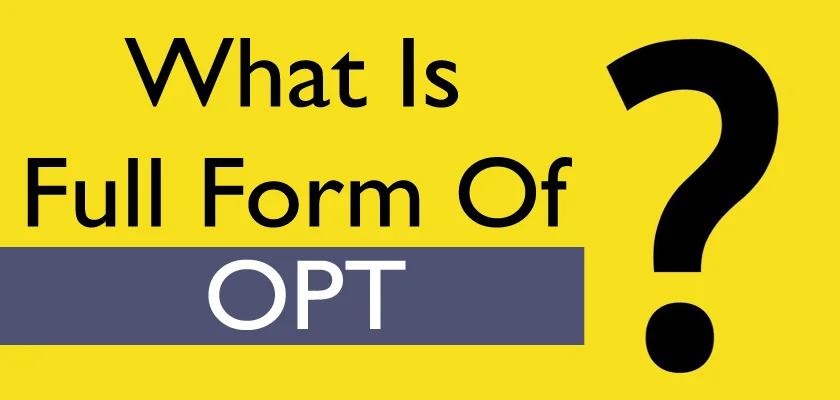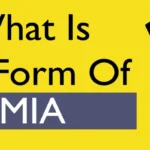The full form of Optional Practical Training (OPT) offers international students with F-1 visas up to 12 months of practical experience in their major.
What are the eligibility criteria for OPT?
Optional Practical Training (OPT) is a temporary employment program for F-1 students in the United States. Here are the eligibility criteria for OPT:
- Maintain Valid F-1 Status: You must maintain valid F-1 student status at the time of application.
- Full-Time Enrollment: You should be enrolled full-time for at least one full academic year in the U.S.
- Physical Presence: You must be physically present in the U.S. when you submit your application.
- Major Field of Study: Your work or volunteer opportunity during OPT must be directly related to your major field of study.
Now, let’s delve into the two types of OPT:
- Pre-completion OPT:
- You can apply for pre-completion OPT after being lawfully enrolled full-time for one academic year at a certified college, university, conservatory, or seminary.
- During school sessions, you may work up to 20 hours per week and full-time during breaks.
- Post-completion OPT:
- Apply for post-completion OPT after completing your studies.
- If authorized, you can work either part-time (at least 20 hours per week) or full-time.
Impact of Pre-completion OPT on Post-completion OPT:
- If you’ve already received 1 year of part-time pre-completion OPT, the remaining full-time post-completion OPT will be reduced by 6 months.
- If you’ve already received 1 year of full-time pre-completion OPT, you won’t be entitled to any period of post-completion OPT.
STEM OPT Extension:
- If you have a degree in certain science, technology, engineering, and math (STEM) fields, you may apply for a 24-month extension of your post-completion OPT employment authorization.
- To be eligible for the STEM extension, you must meet specific criteria, including being employed by an E-Verify enrolled employer.
How long does it take to process an OPT application?
The processing time for an Optional Practical Training (OPT) application can vary, but here are some general guidelines:
- Average Processing Time:
- On average, it takes 2.5 to 5 months for a qualified F-1 academic student’s OPT application to be processed.
- However, individual cases may vary based on factors such as the workload of the processing office and the completeness of your application.
- Recent Data:
- As of November 2023, the average approval time for OPT applications was approximately 47 days, with a range of 8 to 145 days.
- In the same month, 1109 out of 1597 cases were processed, with an average remaining pending time of 114 days for the remaining cases.
- Factors Affecting Processing Time:
- The complexity of your case, the accuracy of your application, and any additional documentation required can impact the processing time.
- It’s essential to submit a complete and error-free application to avoid delays.
Remember to check the official USCIS website for the most up-to-date information on processing times. If you have specific questions about your case, consider reaching out to USCIS directly.

What is the OPT application fee?
The application fee for Optional Practical Training (OPT) is $410. When submitting your OPT application, you can pay this fee using one of the following methods:
- Check or Money Order:
- If filing a paper application, you can pay the fee by check or money order made out to “USCIS”.
- Ensure that you do not sign the back of your check, as this would void it.
- Online Payment:
- If applying online, you can submit your credit or debit card information to pay the fee.
Remember to include the payment along with your OPT application package. If you have any specific questions about the application process, consider reaching out to the U.S. Department of Homeland Security or referring to the official USCIS website.
How do I maintain F-1 status while on OPT?
To maintain your F-1 status while on Post-Completion OPT, follow these guidelines:
- Report Employment and U.S. Address:
- It is your responsibility to ensure that any employment you accept is directly related to your major field of study.
- Use the SEVP Portal to report your employment details, including how the job aligns with your field of study.
- Work at Least 20 Hours Per Week:
- Engage in employment for at least 20 hours per week.
- This ensures compliance with F-1 status regulations.
- Monitor Unemployment Time:
- You are allowed a maximum of 90 days of unemployment during your 12 months of Post-Completion OPT.
- Keep track of your employment status to avoid exceeding this limit.
- Report Changes Promptly:
- Update your information on the SEVP Portal within 10 days of any changes to personal or employment details.
- Failure to do so can negatively impact your status and future benefit requests.
Remember, maintaining F-1 status during OPT is crucial for your legal stay in the U.S. If you have any specific questions or need further assistance, consider reaching out to your designated school official (DSO) or referring to official USCIS resources.
What happens if I exceed the 90-day unemployment limit?
If you exceed the 90-day unemployment limit during your Optional Practical Training (OPT), it can have serious consequences for your F-1 status. Here’s what you need to know:
- Status Violation:
- Exceeding the allowed unemployment period is considered a violation of your F-1 status.
- It may lead to termination of your SEVIS record, which affects your legal stay in the U.S.
- Loss of Validity:
- If your SEVIS record is terminated due to excessive unemployment, your F-1 status becomes invalid.
- You will no longer be eligible for benefits associated with F-1 status, including work authorization and re-entry to the U.S.
- Departure from the U.S.:
- If your SEVIS record is terminated, you must leave the U.S. immediately.
- Failure to depart promptly could result in unlawful presence, which has severe consequences for future visa applications.
- Reinstatement Process:
- If you wish to regain F-1 status, you’ll need to apply for reinstatement through your designated school official (DSO).
- The reinstatement process involves submitting required documents and paying a fee.
- Avoiding Excessive Unemployment:
- To prevent this situation, actively seek employment during your OPT period.
- Consider part-time or volunteer opportunities if you’re unable to secure full-time employment.
- Report any changes in employment status promptly to your DSO.
Remember that maintaining F-1 status is crucial, and compliance with OPT regulations is essential. If you find yourself approaching the 90-day limit, consult your DSO for guidance on how to address the situation.
Can I work for any employer during my OPT period?
During your Optional Practical Training (OPT) period, you have the flexibility to work for any employer as long as the employment is directly related to your major field of study. Here are the key points:
- Employment Eligibility:
- You can work for multiple employers during your OPT.
- The work must be related to your degree and contribute to your professional development.
- Reporting Requirements:
- Use the SEVP Portal to report any changes in employment, including new employers or changes in existing employment.
- Ensure that your employment details are accurate and up-to-date.
- Unemployment Limit:
- You are allowed a maximum of 90 days of unemployment during your 12-month OPT period.
- Keep track of your employment status to avoid exceeding this limit.
- STEM OPT Extension:
- If you qualify for the STEM OPT extension, you can continue working for any employer during the extended period.
- Remember to follow the reporting requirements for STEM OPT as well.
Remember to maintain F-1 status by adhering to the regulations and promptly reporting any changes. If you have specific questions about a particular employer or situation, consult your designated school official (DSO) for guidance.
How do I apply for a STEM extension?
To apply for a STEM extension (24-month extension) of your Optional Practical Training (OPT), follow these steps:
- Eligibility:
- You must have earned a bachelor’s, master’s, or doctoral degree from a school accredited by a U.S. Department of Education-recognized accrediting agency and certified by the Student and Exchange Visitor Program (SEVP) at the time you submit your STEM OPT extension application.
- Application Process:
- Here’s a general outline of the application process:
- Pay the STEM OPT Administrative Fee: Begin by paying the required administrative fee.
- Submit the STEM Extension I-20 Request to OGS: Contact your designated school official (DSO) to request a new I-20 form specifically for the STEM extension.
- Prepare Your STEM OPT Extension Application for USCIS:
- If applying online, follow USCIS recommendations and file online.
- If mailing a paper application, ensure you include all necessary documents and follow the instructions provided by USCIS.
- Here’s a general outline of the application process:
- Reporting Requirements:
- During the STEM extension period, you must continue to report any changes in employment or address using the SEVP Portal or other designated channels.
- Adhere to the guidelines for maintaining F-1 status during the extended OPT period.
Remember to consult your designated school official (DSO) for specific instructions related to your school and individual circumstances. They can guide you through the process and provide personalized assistance.
Other OPT Full Forms
| Term | Full Form | Category |
| OPT | Optional Practical Training | General |
| OPT | Optical Process Test | Electronics |
| OPT | Options | File Type |
| OPT | Optimize Support File (qemm) | File Type |
| OPT | Optical Grade Solvent | Chemistry |
| OPT | Optics | Space Science |
| OPT | Option | Space Science |
| OPT | Ozone Processing Team | Space Science |
| OPT | Operational Pressure Transducer | Space Science |
| OPT | Optimum | Space Science |
| OPT | Operational Planning Team | Military and Defence |
| OPT | Optometry | Military and Defence |
| OPT | Optional | Military and Defence |
| OPT | Ozarks Public Telecommunications | Telecommunication |
FAQ – OPT Full Form
What does OPT stand for?
OPT stands for Optional Practical Training.
When should I apply for OPT?
On average, it takes 2.5 to 5 months for OPT applications to be processed.
Individual cases may vary based on factors like processing office workload and application completeness.
Can I be outside the U.S. while my OPT application is pending?
It’s generally advisable to remain in the U.S. during the application process.
If you leave, ensure you have a valid travel signature on your I-20 and understand the risks.
What if I can’t find a job during OPT?
You are allowed a maximum of 90 days of unemployment during your 12-month OPT period.
Consider part-time or volunteer opportunities to avoid exceeding this limit.
How long can I remain in the U.S. once my post-completion OPT is finished?
After completing your OPT, you have a 60-day grace period to prepare for departure or pursue further studies.
Can I change employers during my OPT period?
Yes, you can change employers during your OPT.
Ensure that the new employment is directly related to your major field of study and report the change through the SEVP Portal.
Can I travel outside the U.S. during my OPT?
You can travel outside the U.S. during your OPT, but there are considerations: Have a valid travel signature on your I-20.
Ensure your OPT application is pending or approved.
Be aware of potential risks related to re-entry.
What if my OPT application is denied?
If your OPT application is denied, consult your designated school official (DSO) for guidance.
You may have options for reapplying or exploring other visa categories.
Can I apply for a second OPT period?
If you have completed a higher degree (e.g., master’s or Ph.D.), you may be eligible for a second OPT.
Consult your DSO for specific eligibility criteria and the application process.
Thanks for reading. What is the OPT Full Form? Bookmark our website Whatisfullform.com. To know more, read our collection of full forms.

